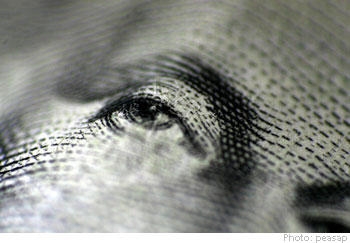 Twenty years ago, I hit upon the idea that I should analyze entitlement programs by assuming that the dividing wall between the trust funds and the government did not exist. That’s a useful idea, because OASDHI [Old Age, Survivors, Disability, Health Income] taxes and benefits are statutory in nature, and not guaranteed. The “trust funds” are a legal fiction. So, consider the entitlement programs as an extension of the federal budget, because that is what they are.
Twenty years ago, I hit upon the idea that I should analyze entitlement programs by assuming that the dividing wall between the trust funds and the government did not exist. That’s a useful idea, because OASDHI [Old Age, Survivors, Disability, Health Income] taxes and benefits are statutory in nature, and not guaranteed. The “trust funds” are a legal fiction. So, consider the entitlement programs as an extension of the federal budget, because that is what they are.
Time for a new blurring of distinctions. The two parties in this case are the US Government and the Federal Reserve. Let’s pretend they are one entity. Why is this reasonable to pretend this?
- Profits from the Federal Reserve go to the US Treasury.
- The US Government appoints most of the critical members of the Fed’s governing board.
- During the crisis, the Fed and Treasury worked hand in glove to achieve their ends.
- The Fed takes actions that an ordinary Central Bank would not. Why bail out Bear Stearns and AIG? Why aid Fannie and Freddie? Why buy mortgage-backed securities? There is no reason for a central bank to own anything but the highest quality securities.
Much as Bernanke and others have protested about central bank independence, they have acted like an arm of the Treasury in most of 2008-2009. So let’s stop the act, or let’s bring back men in the nature of Volcker, Martin and Eccles. Tell Congress and the Executive that we are going to preserve sound money, and if they don’t like it, don’t reappoint us.
But suppose we continue on in the limp-wristed way that we have been going. Maybe the US doesn’t have a Central Bank. Maybe it has an additional financing arm. Think of the Dollars you hold as o% 0-day commercial paper. Think of the Fed encouraging banks to lend to them for the rate of less than 0.25%/year annualized on an overnight basis. Consider their purchases of longer dated securities as similar to that of a hedge fund, admittedly a clumsy one, pasted onto our government.
So long as there is slack labor, slack capital, and slack resources, the cheap lending rates to the US government can persist. But in the ’70s resources were not slack, and inflation occurred while there were recessionary conditions. If the global economy is markedly stronger than the US economy, that could be our situation again — stagflation.
Central banks by their nature abhor two risks, credit risk, and lending long. In the present environment, the Fed is doing both. Bagehot said to lend against impeccable capital at a penalty rate. In the current crisis, the Fed, far from being independent, is absorbing credit risk, and lending long risk, and is doing so without abnormal compensation, indeed the compensation is sometimes subpar.
My sense is that when the Fed stops its purchases of mortgage bonds in the next few months, the longer-dated debt markets will cease to be so friendly, and rates will rise. That is what should be happening. It is risky to lend for long periods in US Dollar terms, and those that do so should be amply rewarded.
There are many who are arguing that the US should borrow more and spend with abandon. They are fools; fools believe that the government can create prosperity through legislative or regulatory actions. As it is, the creditworthiness of our government declines as we use its credit to bail out private interests.
We might not be as bad off as Greece, but what assurance do creditors of the US have that they will be repaid in purchasing power similar to that which they lent? I don’t see the assurance. Better to invest in the debt of non-PIIGS euro-debt. [PIIGS — Portugal, Ireland, Italy, Greece and Spain]
There is a lot of stress in the global economy as it attempts to reconcile economies that must export, no matter what, with those that must run deficits, no matter what. The exporters take in debt from the nations that borrow in order to make books balance. I don’t know when that system will break, but it will break, delivering losses to the exporters, much as that happened in the era of mercantilism.
That said, when the exporters lose, so will the countries that relied on the cheap financing, including the US. Interest rates will be higher, and the US economy will be that much weaker, aside from exporters benefiting from a weaker dollar. This may not take place for years, but it will eventually happen.
In other words, the cheap finance that the US has will eventually fail. I don’t know when that will be, but eventually the world will tire of handing over goods for promises.
- Bulenox: Get 45% to 91% OFF ... Use Discount Code: UNO
- Risk Our Money Not Yours | Get 50% to 90% OFF ... Use Discount Code: MMBVBKSM
Disclaimer: This page contains affiliate links. If you choose to make a purchase after clicking a link, we may receive a commission at no additional cost to you. Thank you for your support!



Leave a Reply